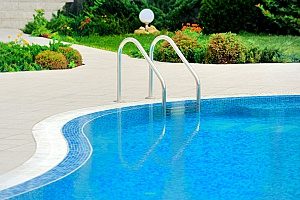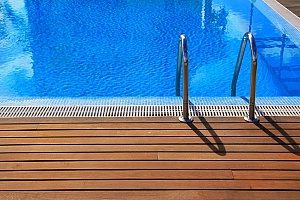 When you decide to purchase pool removal services, you don’t suddenly get the perfect backyard after they are completed. While removing a pool is the first step, there are many things to consider along the way, such as what you’ll do with the new space, as a patio will have different removal requirements than an in-law apartment. This can be especially important if you are at all concerned with the stability of your lawn after a pool removal. An experienced pool removal contractor can ensure that your yard is in the best shape possible following your pool removal. However, there are different services available, each with varying levels of stability. Here’s what homeowners should know about full and partial pool removals before hiring a pool removal contractor.
When you decide to purchase pool removal services, you don’t suddenly get the perfect backyard after they are completed. While removing a pool is the first step, there are many things to consider along the way, such as what you’ll do with the new space, as a patio will have different removal requirements than an in-law apartment. This can be especially important if you are at all concerned with the stability of your lawn after a pool removal. An experienced pool removal contractor can ensure that your yard is in the best shape possible following your pool removal. However, there are different services available, each with varying levels of stability. Here’s what homeowners should know about full and partial pool removals before hiring a pool removal contractor.
Partial Pool Removals
A partial inground pool removal entails tearing down only the top 18 inches of the pool’s walls after it has been drained. Contractors will drill holes into the bottom of the pool to ensure proper drainage, then fill in the shell with pool debris from the top section and fill dirt. The material will be compacted and covered in dirt, making it possible to plant a garden, build a small shed, or install a patio in the space that remains. This type of removal typically takes between two and five days to complete. Partial pool removals must be disclosed to potential buyers if you decide to sell your home in the future, and only certain types of pools are eligible for partial pool removals.
Full Pool Removal
A full inground pool removal may be the only option if your pool has steel walls or collars. If you choose to undergo this type of pool removal service, the entire pool will be dismantled and removed, with nothing but a hole made of dirt remaining. The cavity will be filled with only dirt and compacted. It can then be covered and used in the same way as a partial pool removal. However, living areas, such as extensions to your home or a small apartment, can only be constructed on full pool removals. Full pool removals take up to seven days and are more expensive than partial removals. They do not typically need to be disclose to future buyers, though many will appreciate the information. Full pool removals can be completed for any pool material.
Benefits of Pool Removal Services
 No matter which option you choose, removing your pool will result in time and cost savings. Homeowners can spend less of maintaining proper pH levels, cleaning the pool, repairing equipment, and other chores that must be completed year-round, whether the pool is being use or not. In addition, the pool removal will provide you with extra yard space for playing and relaxing without the stress of injuries that can happen because of the pool, particularly with small children and pets. There are also distinct benefits to each type of pool removal.
No matter which option you choose, removing your pool will result in time and cost savings. Homeowners can spend less of maintaining proper pH levels, cleaning the pool, repairing equipment, and other chores that must be completed year-round, whether the pool is being use or not. In addition, the pool removal will provide you with extra yard space for playing and relaxing without the stress of injuries that can happen because of the pool, particularly with small children and pets. There are also distinct benefits to each type of pool removal.
Partial pool removal services are cheaper and faster than full pool removals, typically costing about 30 percent less. They can be completed within five days, sometimes taking just one day for smaller pools, making them an attractive option for homeowners who are on tight budget or working under time constraints. After a pool removal, you can enjoy the extra space created by building a patio or garden, or by simply taking advantage of the space for games and other entertaining.
Choosing a full pool removal, however, means that there is less margin for error than with a partial removal due to the fill materials used. In addition, full pool removals are typically more stable than partial pool removals, and there are no building restrictions for the area. This alone may be the deciding factor for homeowners who are considering pool removal services but are unsure of the best option for their household.
Staying Stable
Pool removal contractors typically recommend full pool removals for several reasons. First, full pool removals create more stable ground than partial removals. This is because there is less room for error during the filling process. The large chunks of pool debris used to fill the cavity during a partial pool removal can cause leaks during rainy weather, damaging the integrity of the fill. They can also settle over time, which can change the elevation and evenness of the area. Contractors have more control over the fill during a full removal, when only dirt is used, and can compact the area more effectively. As a result, living areas — such as additions to your home or small apartments — can only be constructed over fully-removed pools. A full pool removal provides homeowners with more options after the removal is complete, while partial pool removals have a few more restrictions.
 Homeowners who are not planning to build over their fully-removed pool should still consider full pool removal services. Despite the extra cost, it can provide extra flexibility if you’re unsure of how you’d like to use the area. A full removal can bring peace of mind to both homeowners and potential buyers, as there is less chance of damage occurring at a later date. Homeowners can be confident that they will likely not have to spend extra money on future repairs and maintenance to the area.
Homeowners who are not planning to build over their fully-removed pool should still consider full pool removal services. Despite the extra cost, it can provide extra flexibility if you’re unsure of how you’d like to use the area. A full removal can bring peace of mind to both homeowners and potential buyers, as there is less chance of damage occurring at a later date. Homeowners can be confident that they will likely not have to spend extra money on future repairs and maintenance to the area.
Hiring a Pool Removal Contractor
Speak to a pool removal contractor for more information and to schedule your pool removal services. A professional contractor can help answer questions about full and partial pool removals to help you make the right decision. Dirt Connections provides free estimates for full and partial pool removals and can help you determine the best course of action for your budget, timeline, and future plans for your lawn. The company has years of experience in redesigning homes and yards in the Maryland and Virginia areas and prides itself on completing projects in a timely, clean manner without sacrificing quality. Dirt Connections also provides residential and commercial construction, roof repair, fill dirt, architectural planning, and more.









































